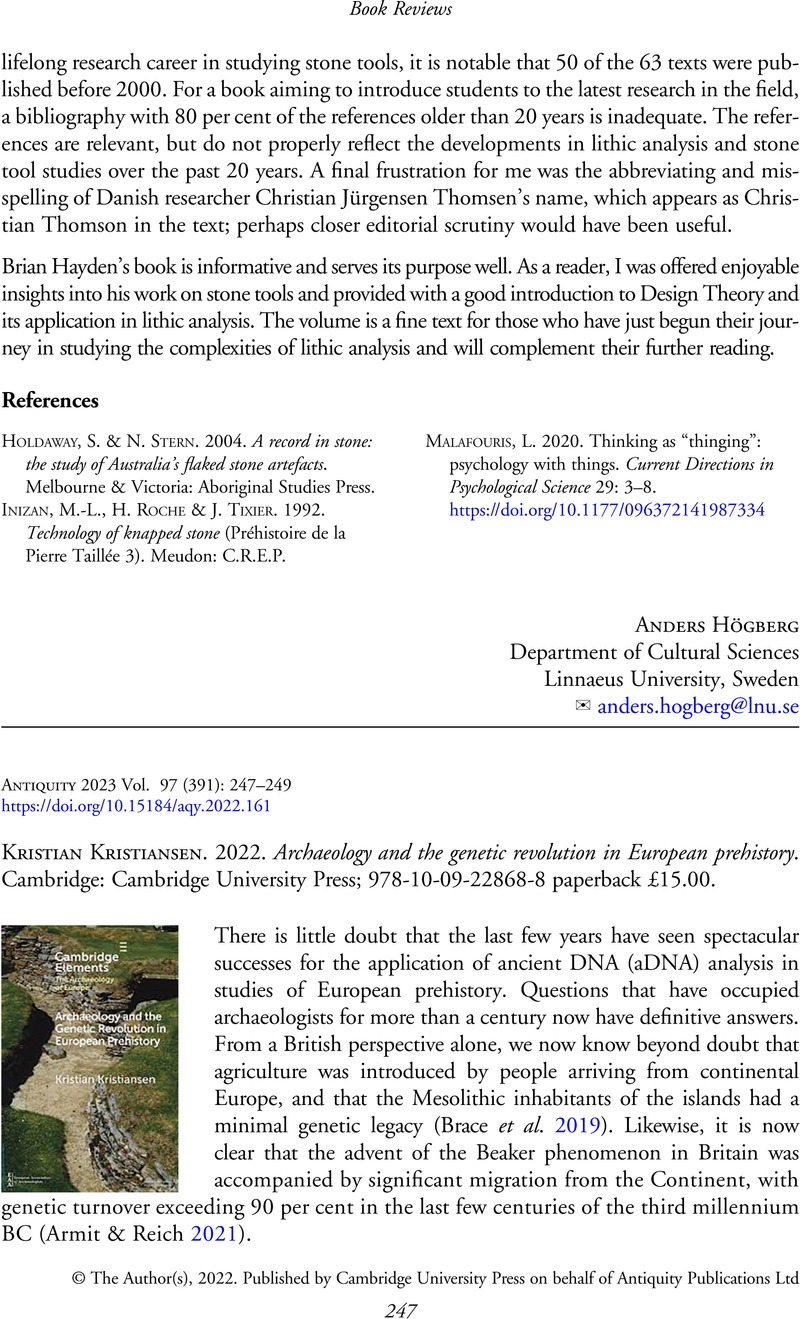No CrossRef data available.
Article contents
Kristian Kristiansen. 2022. Archaeology and the genetic revolution in European prehistory. Cambridge: Cambridge University Press; 978-10-09-22868-8 paperback £15.00.
Review products
Published online by Cambridge University Press: 05 December 2022
Abstract

- Type
- Book Reviews
- Information
- Copyright
- Copyright © The Author(s), 2022. Published by Cambridge University Press on behalf of Antiquity Publications Ltd


